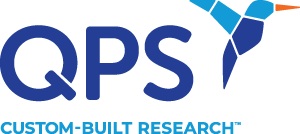Alzheimer’s Disease (AD), a progressive neurodegenerative disease, is estimated to affect around 50 million people worldwide. AD is most prevalent in North America and Western Europe, and it is the top cause of disabilities in people 65 and older in the United States. Identifying early warning signs has proved elusive, although researchers are working hard on finding new methods of early AD detection. Scientists at the University of California San Diego (UCSD) have discovered a new biomarker that may help detect Alzheimer’s disease earlier.

The study focuses on extracellular ribonucleic acid (exRNA), endogenously found in all human biofluids, including blood, saliva, serum, plasma, and others. Its function is not entirely understood, but it is believed to play a role in cell regulation and cell-to-cell communication. As of yet, it remains mostly unknown to what extent blood exRNAs reflect human physiologic and disease statuses.
According to the researchers, their findings point to the fact that high levels of exRNA of the phosphoglycerate dehydrogenase (PHGDH) gene in the blood could be indicative of Alzheimer’s Disease.
The PHGDH gene is critical for brain development and function; it translates both into a specific protein and RNA essential for cognitive development and functioning in infants, children, and adolescents. During the aging process, the gene’s activity decreases, as does translation of its associated RNA and protein. Overproduction of PHGDH-related exRNA in elderly people could indicate abnormal activity of the gene and could provide an early warning sign of Alzheimer’s disease.
This discovery could lead to the invention of a blood test to identify people who will develop Alzheimer’s years before they show any symptoms at all. With every state in the U.S. expected to see a 14% rise in Alzheimer’s cases in the next five years, this could be an important diagnostic breakthrough.
According to Sheng Zhong, a professor of bioengineering at the UC San Diego Jacobs School of Engineering, “Several known changes associated with Alzheimer’s Disease usually show up around the time of clinical diagnosis, which is a little too late. We had a hunch that there is a molecular predictor that would show up years before, and that’s what motivated this study.”
Testing with Micro Blood Volume
The researchers developed a technique — called small-input liquid volume extracellular RNA sequencing, or SILVER-seq — using just a single drop of blood for testing. The sample size is just five microliters, as opposed to the typical 30-microliter blood volume necessary for other common types of blood tests. An exRNA profile screens for exRNA of tens of thousands of different genes, much like a library. The SILVER-seq is able to generate exRNA profiles from a longitudinal collection of human blood plasma samples.
The experiment was conducted on archived plasma from research subjects being followed at UCSD from 2000 to 2014. The 164 total samples were from 35 individuals 70 years old and older, who were monitored for 15 years prior to their death. The cohort consisted of 15 patients with Alzheimer’s Disease (clinical diagnosis confirmed by pathological analysis of post mortem brains); 11 patients who were originally healthy but then developed AD; and 9 healthy controls. Of the 11 patients who were originally healthy, plasma PHGDH exRNA levels exhibited presymptomatic increases during their transitions from healthy to cognitive impairment. In the control subjects, plasma PHGDH exRNA levels remained stable over the entire 15-year period.
The experiment showed a steep increase in exRNA production in patients who didn’t originally have Alzheimer’s Disease about two years before diagnosis. Additionally, PGHDH exRNA levels were on average higher in AD patients. There was no increasing trend in controls, aside from the one patient who did later develop AD.
The research team recognizes the significant limitations of the study, particularly that it was a retrospective study based on clinical follow-ups and not a classic randomized clinical trial with a large sample size. Thus, this test cannot yet be called a verified blood test for Alzheimer’s Disease.
AD Biomarkers
Future studies will test whether the PHGDH biomarker could be used to identify patients who may respond well to preventative drugs to slow the disease’s progression. The scientists at UC San Diego are open to collaborating with organizations that would like to partner in validating and testing the biomarker.
“[The study] suggests that there are biomarkers outside of the brain that are altered before clinical disease onset and that these changes also predict the possible onset or development of Alzheimer’s disease,” said Dr. Edward Koo, a professor of neuroscience at the UC San Diego School of Medicine.
Given that the initial phase of Alzheimer’s Disease is approximately 15 years before the onset of clinical symptoms, the novel biomarkers of early AD development will assist significantly in providing diagnostic information for presymptomatic individuals. With the U.S. on track to have 16 million older adults living with Alzheimer’s Disease by 2050, the validation and use of this biomarker could have a significant public health impact for the aging population.
Since 1995, QPS has provided discovery, preclinical, and clinical drug development services. An award-winning leader focused on bioanalytics and clinical trials, QPS is known for proven quality standards, technical expertise, a flexible approach to research, client satisfaction, and turnkey laboratories and facilities. For more information, visit www.qps.com or email [email protected].





